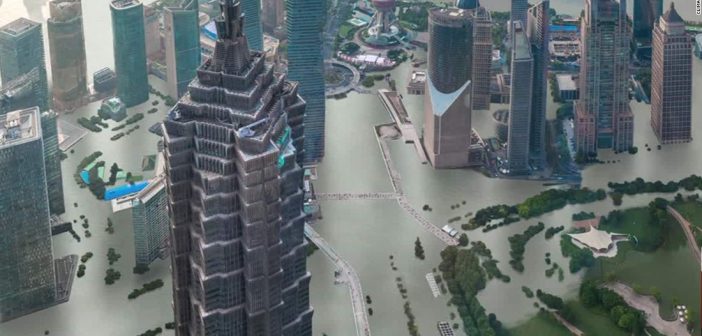Andrew Burgin reviews Richard Smith’s new book ‘China’s Engine of Environmental Collapse’ Pluto 2020
It has become a truism that we live in the most dangerous phase of imperialism. Rosa Luxemburg’s assessment that the future we face is either that of ‘socialism or barbarism’ no longer fully expresses the depth of the interlocking crises facing humanity. As the Hungarian Marxist Istvan Meszaros wrote in 2003: ‘if I had to modify Rosa’s words it would be ‘barbarism if we are lucky. …the extermination of humanity is the ultimate concomitant of capital’s destructive course of development.’
The world situation has deteriorated even since Meszaros wrote those words: America’s longest ever military engagement continues in Afghanistan; the Middle East is further destabilised through US invasion and war in Iraq which cost the lives of 100,000s; the dismemberment of Libya; the wholesale destruction of Syria, and the creation of millions of refugees. The climate crisis is severe and worsening and is even at this point doing irreversible damage to the planet. This year we have extensive wild fires in the US, the melting of the permafrost in Alaska and Siberia which is accelerating climate change, the decline in sea ice in the Arctic and from where frozen methane deposits have started to be released, the Greenland ice sheet has melted beyond the point of no return and much of the Amazon rainforest has been transformed into savannah.
On top of these crises we can add continued economic stagnation and decay, particularly in the capitalist West, and the emergence of the COVID-19 pandemic which will deepen global economic problems. The radical socialist and revolutionary left is generally in retreat having largely been eclipsed by the emergence and rise of reactionary and far-right forces although there are exceptions to this rule such as the recent MAS victory in Bolivia. The most acute symptom of the present conjuncture in international relations is the emerging cold war between an economically declining US empire, struggling to deal with the pandemic, and a rising China. Our understanding and engagement with this new cold war will be crucial not only for the future of humanity but for the political future of the radical socialist left internationally.
Richard Smith’s new book China’s Engine of Environmental Collapse has been hailed by Michael Löwy as brilliant and strikingly original, saying, ‘This is an important book! It is the first Marxist attempt to describe, explain and critically analyse the Chinese model of (hyper) development, and its disastrous ecological consequences – for the Chinese people as well as for the whole planet.’
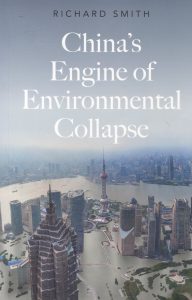
Smith’s central thesis is that the model of Chinese economic development – which he understands as a fusion of capitalism and bureaucratic-collectivism – is the main driver of the environmental destruction of the planet. He says ‘the marriage of capitalism and Stalinist-Maoist bureaucratic-collectivism has created a diabolically ruinous hybrid economic system that is ravaging China’s environment, destroying the health of its people, driving the country to ecological collapse, and threatening the whole planet.’
Smith considers this ‘diabolical’ system far more destructive than what he calls ‘normal capitalism’, however those seeking a Marxist explanation for the system’s origins, development and future prospects may be disappointed. There is no class analysis of Chinese society or of the Chinese state. In his concern to expose the destructive nature of the Chinese economic and political system, he fuses his narrative with many of the cold war tropes which dominate neo-liberal thought about Chinese society.
When the US under Nixon and Kissinger opened up relations with China in the 1970s it seemed inconceivable that China could ever threaten US economic power. At that time the Chinese economy was one twentieth the size of the US economy and hundreds of millions of its people lived in abject poverty. The West assumed that as China modernised it would undergo political transformation into a form of bourgeois democracy and that the essential pre-requisite for such a transformation would be the privatisation of Chinese state-owned industries accompanied by the free flow of capital transfers and a political system along US lines. The failure to follow that path would relegate China to a relative economic backwater unable to escape the so-called middle-income trap. As the supply of cheap labour from the countryside dried up it would find itself powerless to advance economically and to enter the high-value added markets of more developed economies. These assumptions have proved to be incorrect.
Central to this is the idea that the Chinese economy would also be unable to innovate successfully and advance technologically unless it adopted the Western political model. In his book Smith accepts this view arguing that China has been unable to produce any counterparts to the likes of Bill Gates, Steve Jobs or Elon Musk because intellectual property rights – themselves a deeply flawed concept – are not guaranteed in China. He asks ‘What rational capitalist would risk investing millions today when all their Intellectual Property could be stolen tomorrow?’ And he goes on to say, ‘Chinese billionaire capitalists like Alibaba’s Jack Ma or Huawei’s Ren Zhengfei are big and rich only because their companies are cosseted, state-funded, state-protected monopolies not because they’re great innovators’. Smith’s argument is that because of the structure of China’s economic and political system the country is forced to steal IP from the technologically innovative West. But again this has proved not to be the case.
In reality China has transformed into a global technology leader and the US is targeting the most successful Chinese companies. The Trump administration is exploring restrictions on Jack Ma’s Ant Group over concerns that its digital payments platform would come to dominate the US market. It has expressed similar concerns over ByteDance’s TikTok company to which tens of millions of young people in the States have signed up. Huawei Technologies has been in Trump’s sights for a long time now because it is way ahead in 5G technology.
Smith’s argument ignores the fact that for much of its history China was more advanced than the West in science and technology. There is a considerable debate as to how and why the industrial revolution took place in Britain in the late 18th century but there is general agreement that the West drew on previous developments in Chinese science and technology. The concept of intellectual property rights does not derive from a socialist world view. Socialists understand developments in science and technology to be part of the common treasury of humanity. As the biologist and sinologist Joseph Needham wrote, ‘Modern science is composed of contributions from the peoples of the Old World, and each contribution has flowed continuously into it, whether from Greek and Roman antiquity, or from the Arabic world or from the cultures of China and of India.’ Moreover, billionaires from either the US or from China whose wealth has soared during the pandemic derive their riches not from technological innovation but as a result of the nature of the global economic system.
The assumption that China would never rival the United States while the Communist Party remained in power underpinned US policy towards China from the late 1970s onwards. That belief began to unravel following the 2007/8 financial crisis when the Chinese economy played the key role in stabilising the global economy. Its direct control over production and the banking system enabled it, by 2014, to overtake the US economy in purchasing power parity, becoming the second largest economy in the world. The Chinese economic system is qualitatively different from that of the US, as Marxist economist Michael Roberts points out, ‘the capitalist mode of production does not dominate in China’. A 2012 World Bank report on China explained, the successful economic growth in China is based on bureaucratic state planning and government control of investment. Smith while accepting that state planning is central to China’s economic rise, argues that state control is a negative factor and argues that it leads to unrestrained growth. It is the size and nature of that growth which poses the greatest risk to humanity, and which is the primary driving forces in the world behind climate collapse, eco-suicide and the Sixth Extinction.
Smith presents US President Donald Trump as a far-sighted and tactically astute leader. Thus, he says,‘Trump is the first, and so far the only, Western leader to have publicly called out the Party’s criminal operations for what they are’.Trump believes that China has only prospered because it has stolen technology and intellectual property from Western companies. Smith goes on, ‘Trump’s first round of tariffs blind-sided the Party leadership’. He says ‘some [Chinese citizens] are whispering that ‘only Trump can save China’, and quotes the Lehman Brothers economist Zhu Ning, ‘the trade war is a good thing. It gives us hope when we are hopeless’. Smith notes that Trump has withdrawn from the Paris Agreement – which was the result of the 2015 United Nations Climate Change Conference but he believes that Trump’s ability to damage the environment and climate is limited whereas China’s is unconstrained. In reality Trump has not been that constrained, he has scrapped climate regulations in the US, rolled back clean water rules and loosened pollution standards while encouraging new fossil fuel development.
It’s a one-sided world-view which sees China as ‘bullying and threatening the US’ and ‘seizing the South China Sea’, but which mentions neither Obama’s Pivot to Asia nor the huge US military build up in the South China Sea and which has no analysis of the struggle for hegemony between a US in decline and a China on the rise. The new cold war between China and the US is a product of this. Both wings of the US ruling class are determined to halt China’s rise through a hybrid strategy of political, ideological, technological and financial interventions and through stepping up military pressure.
The style of the book often rests on overheated journalese and the inflamed rhetoric obscures the valuable points Smith makes about environmental pollution and climate change. The book fails to analyse or explain its central conclusions. For example, Smith writes in his concluding chapter ‘The Next Chinese Revolution’ that ‘one way or another the Chinese Communist Party is headed for the dustbin of history’. He says ‘many in China yearn for a transition to a capitalist democracy like in Taiwan or the US. Who wouldn’t?’. Smith places his hopes for the region on a united front for democracy led by Taiwan and Hong Kong, where he says residents enjoy the freedoms of ‘western capitalist democracies’. However it is unclear how Smith sees this transition to democracy taking place much beyond him saying ‘the East German Stalinists never saw it coming either’.
Smith, I think, overestimates the antipathy to the Chinese Communist Party among the general population. The Party continues to enjoy a reservoir of legitimacy which in part derives from its revolutionary history and in part from the economic advances within contemporary Chinese society.
Prior to 1949 China was overwhelmingly a feudal society with huge levels of poverty, a semi-colony subject to brutal imperialist exploitation. The revolution of 1949 ended more than a century of political humiliation for China at the hands of Japan and the West. Following China’s defeat in the Opium Wars of the 1840s and 50s, the major European powers compelled it to grant them favourable tariffs, trade concessions and territory, including Hong Kong. China was further weakened by military defeat by Japan in 1895. Lenin wrote, ‘The European governments have already started to partition China. They are not doing it openly, but stealthily like thieves. They have begun to rob China as they would a corpse.’
In the revolutionary uprisings of 1925-7, the Communist International dominated by Stalin insisted that the Communist Party, formed in 1921, subordinate itself politically to Chiang Kai-shek and the bourgeois nationalist Kuomintang movement. In 1927 Chiang Kai-shek slaughtered tens of thousands of Communist Party-led workers in Shanghai, Canton and other cities. For the next decade the Kuomintang sought to completely destroy the CCP. Mao Zedong argued that in order to survive, the Communist Party would need to adapt its Marxism to the concrete conditions in China at the time, saying, ‘if a Chinese Marxist talks of Marxism apart from its Chinese peculiarities, this Marxism is merely an empty abstraction.’ Unlike the conditions in which the Bolshevik party operated in Russia in 1917, the CCP was forced out of the cities and eventually, operating in a very different Chinese context, built popular and socially progressive bases in the countryside while adopting the tactics of guerilla warfare.
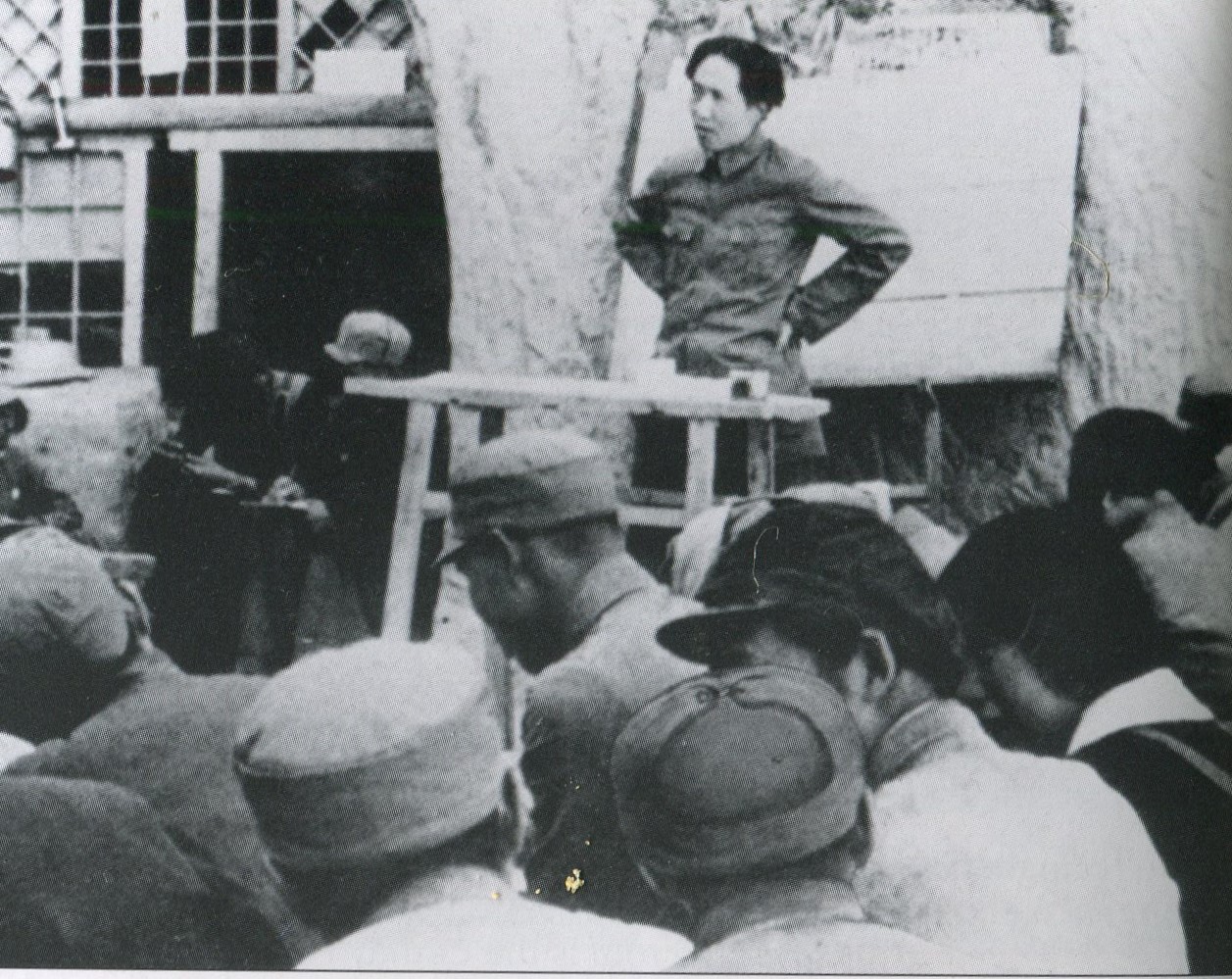
Mao Zedong at Yan’an
In 1937 the Japanese invaded and occupied China. Japan was eventually defeated in a war that lasted until 1945 and which cost the lives of between 12 and 15 million Chinese. The civil war then resumed with the Communist Party finally defeating the Kuomintang in 1949 when the People’s Republic of China (PRC) was proclaimed. The deep roots of the CCP in Chinese society are located in this history. The party united the country in a war of national liberation thus ending colonial exploitation in China and it also destroyed the landlord class and freed the peasantry through an agrarian revolution. The land was redistributed and marriage reform was introduced which undermined the patriarchal basis of Chinese society. Women were given equal shares of confiscated land and access to divorce. As the US journalist Jack Belden write at the time, ‘in the women of China the communists possessed, almost ready made, one of the greatest masses of disinherited human beings the world has ever seen. And because they found the key to the heart of these women, they also found one of the keys to victory.’
One of the other keys to victory was winning over the urban proletariat. The majority of big factories lay under the control of colonial countries in concession ports and cities. Winning power in the cities was linked with the national liberation struggle. The Communist Party defeated both the nationalists and the colonialist forces in the cities. In the areas where the Kuomintang had been in power the CCP revived the labour unions, doubled wages and improved working conditions while dealing with collaborators and instituting popular elections.
After the revolution the PRC turned to the Soviet Union as its closest ally and economic partner. During the 1950s, China received extensive support in its industrialisation process with expertise, equipment and the building of factories. By the late 1950s political relations had deteriorated as Mao developed his outspoken critique of Soviet policies, including that of ‘peaceful coexistence’, and by 1961 the CCP had declared that the Soviet Union had become a ‘revisionist’ power. With the withdrawal of Soviet economic support, Mao had turned increasingly to Chinese-reliant programmes, such as the Great Leap Forward in the late 1950s, to develop the economy; he also introduced political initiatives like the Hundred Flowers movement of the 1950s, and the Cultural Revolution of the 1960s, designed to open up debate and counter developing bureaucratisation. Such initiatives, while designed to address real problems through the mobilisation of the people, often led to catastrophic and terrible outcomes; they were unable to provide the basis for the scale of production needed to lift China out of poverty.
In 1978 the economic reforms of Deng Xiaoping opened China to limited foreign investment and a developing relationship with the global market; within a generation China has emerged as a great economic power and creating the most powerful working class on the planet.
Smith’s book is strongest in detailing the terrible environmental toll that China’s economic rise has taken on the country but weakest in its explanatory power. He fails to take account of China as a developing country. So he states that China became the ‘toxic waste dump of the world’ without understanding that this is the common fate of developing countries to be the dumping ground for waste from the industrialised West. China has now banned the import of toxic waste but many other Asian and African countries are forced to continue to accept such shipments. He ascribes blame to China for what is actually the result of economic relationships in a grossly unequal world.
Marxist analysis is lacking in his consideration of the CCP and its leadership. He draws his colourful inspiration from Western popular culture, from the Godfather films and the television series Game of Thrones. Xi Jinping is presented as a sociopathic Don Corleone figure constantly seeking ways of wiping out his competitors. ‘ Xi is trying hard but he can’t lock the whole population up in psychiatric hospitals and concentration camps’.
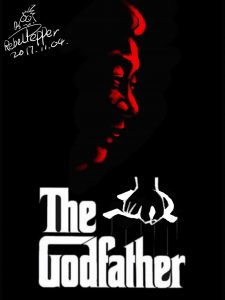
Smith’s analysis of the Chinese political system in his chapter ‘Guanxi and the Game of Thrones’ is primarily based on the work and writings of the neo-liberal economist Minxin Pei who is referred to throughout. Pei sees the party as a gangster type operation saying, ‘if your patrons do not protect you you’re toast…’ This understanding seems to have impressed Smith who has developed an entirely cynical view of the importance of Guanxi, the Chinese social and cultural concept in which personal relationships are considered as important as laws and written agreements. Pei himself has been wrongly predicting the end of CCP rule since the early 1990s.
Smith describes the Party ‘ruling class’ as ‘the gang of 90 million cadres led by a ‘few hundred top crime families’. He writes ‘life in the Party is not so different from life in the Mafia’; the ruling elite are engaged in a continuous warfare over the ‘loot’ and there have been several attempts to bump off Xi Jinping. Undoubtedly there is corruption within the CCP and at the highest levels and there is huge wealth inequality in China, in part driven by the city /countryside divide. This merits serious Marxist analysis but we are not getting this from Smith. He contends that the corruption and Mafioso practices which he understands to be central to the system are driven by the insecurity in property relations. It is not clear to me whether he is implying that capitalist property relations are preferable to state ownership. Thus he says that in the West ‘the security of property is completely formalised with the rule of law and independent courts, judiciary, and police to back it up’. Whereas in China ‘the state owns the land, natural resources, most of the economy, its offshore investments, foreign exchange holdings and the Party owns the state collectively’. Smith’s contention is that not only is the party deeply corrupt but that this extends to Chinese society as a whole. He presents a very bleak picture of a society in which he contends that the kidnapping of women and children are significant industries.
There are regular attempts to eradicate corruption within the system in China, and Xi Jinping instigated an anti-corruption campaign in 2012, the largest in the party’s history. However Smith argues such campaigns are largely ineffective and even when corruption among the ruling elite is uncovered those prosecuted are sent to prisons which are more like luxurious holiday homes. Smith says ‘many punished officials bounce back, like child molesters in the Catholic Church’. Later in the book he accuses XI Jinping of waging a campaign of terrorism against the elite under cover of the anti-corruption campaign and says that Xi’s policies have forced many wealthier Chinese to emigrate. Thus he says, ‘Mandarin is almost a second language in my neighbourhood of Chelsea in Manhattan’.
Smith maIntains that the corruption extends to the youth who ‘have been so seduced by capitalism and consumerism they have become cynical and indifferent towards politics, human rights and the environment, and insouciant toward the CCP lies and repression’.
In his view the entire society is cynical, amoral and nihilistic. China he says is ‘completely corrupt’: from the education system to the legal system and to the health service. Patients are treated in fake hospitals by fake doctors. China is busy building ‘hundreds of ghost cities’, roads and bridges that go nowhere, leading to massive pollution of its rivers, land and people and destroying much of the rainforest through its demand for hardwood. Smith contends that food produced in China is so contaminated by pollution that much of it is not fit to eat, in some cases rat meat is substituted for pork. Smith says that China has been forced to purchase Western food producers in order to provide its population with safe food. It’s unfortunate that the example Smith gives is that of Smithfield Foods, the largest pork producer in the US whose production and food methods have a poor safety record and an even worse history of environmental pollution.
The contradictions within Smith’s narrative are many. His deep negativity about Chinese society and his determination to show that nothing is positive overwhelms his necessary message about the destruction of the natural environment which is the dominant issue of our age.
One central contradiction relates to the position of Chinese workers in society. On the one hand Smith argues that the working class is kept in conditions of near slavery by ‘the most powerful police state in history’ but on the other he concedes that wages are rising significantly. He explains that the working class has managed to raise the level of wages through widespread strike activity. Smith says the government faces hundreds of workers’ protests including strikes across the country every day and therefore has no choice except to initiate policies to eradicate unemployment, ‘the government cannot afford to have masses of unhappy unemployed workers milling about.’
The Chinese government does lays enormous stress on raising and sustaining levels of employment. However for Smith it is this priority that the state places on keeping its population in employment that is one of the central drivers of environmental damage. The state focus on full employment leads to overproduction and the creation of ‘ghost factories’ resulting in what Smith says are ‘horrendous consequences for global resource exhaustion and CO2 emissions’. According to Smith the introduction of market incentives into the economy has only worsened China’s environmental problems. But he argues that this is because the market reforms did not go far enough because the CCP refused to enact what Smith calls ‘real reform’. Such reforms he says would need the Party to ‘abandon central planning, privatise state industries, and fully commoditize the economy.’
Although Smith declares that Chinese youth have been corrupted by consumerism, he details the emergence of the hugely important Marxist-led student movement in Peking University which linked up with Marxist student societies in other universities in China. This student movement sought to support the widespread labour struggles taking place, particularly that of the workers at the Jasic Technology company in Shenzhen. Workers at Jasic sought to form a trade union to fight for better conditions and higher wages. The company fired the workers leading to protests from other factory workers in Shenzhen, actively supported by Marxist student groups. The student leaders, Qiu Zhanxuan, Zhan Zhenzhen, Shen Mengyu and Yue Xin, were arrested and placed in detention.
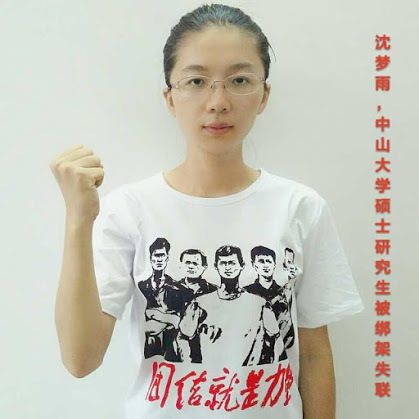
Shen Mengyu
The Chinese state is well aware of the powerful resonance of the combination of students and workers. The Communist Party was formed out of the student struggles of the May 4th movement in 1919 and seventy years later the powerful movement of students and workers in Tiananmen Square so threatened the party that the army was brought in to suppress the movement.
Smith’s account of Chinese development is sometimes infused with a very dismissive and somewhat ignorant appreciation of Chinese culture. He makes some powerful points about the extinction of rare flora and fauna and China’s role in this trade but then he expands his point to take aim at Chinese traditional medicine as a whole calling it ‘superstitious quackery’. He goes on to say that, ‘Many assumed that China’s obsession with traditional medicine would wane as the country modernised’. However, many important developments in modern medical science have come from the integration of the contributions from Chinese preventive medicine developed over thousands of years. To give one example – in 1967 Ho Chi Minh asked the Chinese for help in curing the malaria which was wiping out the North Vietnamese troops on the Ho Chi Minh trail. The leading Chinese scientist at the time, Nobel laureate Tu Youyou, developed a cure from a 1600 year old traditional Chinese medical recipe. Her work not only helped win the war in Vietnam but went on to save the lives of millions of people in Asia, Africa and Latin America.
Smith seems to be objecting to Chinese economic growth per se. Its ‘hyper-industrialisation’ compels China to ‘drive CO2 emissions off the chart’. Although records show that US per capita CO2 emissions are double those of China, he says, ‘no other nation has wrecked its environment so quickly and on such a scale’. Smith argues that this is as a result of the specific nature of the Chinese economic and political system. For Smith, China’s inability to protect its environment lies with state central planning and the absence of the profit motive. Under ‘normal’ capitalism a decline in profits will lead to a decline in production and a limit to growth. For Smith this is a necessary and essential step to save the planet, taken together with capitalist democracies allowing a freedom to organise which enables environmental organisations to impose some restraint on pollution. This is not possible in China because the economy does not follow the Western capitalist path. He says ‘These statist ruling class priorities give China’s hybrid bureaucratic collectivist capitalist system a different logic and rationality, and different drivers, contradictions and tendencies from capitalism elsewhere.’
How we understand China and the Chinese state will be crucial to the political struggles of the coming period. The conclusions that Smith draws from what seems to me to be a correct assessment of the nature of the Chinese economic system ie – state central planning, control of the banking system, the dominance within the economy of the state owned enterprises – are mistaken. In his understanding it is the state-controlled elements of the economy which are uniquely damaging and are the central drivers of the environmental destruction of the planet. Thus he shifts the necessary focus for struggle away from capitalism as a global system.
No country in the world has ever grown so fast in such a short historical period as China. For Marxists who consider China to be a capitalist social formation this should open some theoretical questions. How under capitalism has such a massive development of the productive forces taken place? Smith’s contention that this is a new economic formation distinct from normal capitalism but more dangerous to humanity’s continued existence, also poses some questions for us about the nature and necessity of economic growth. Smith appears to be arguing that it is economic growth in itself which poses the central problem for humanity and that the protection of the planet and our future on it requires us to produce and consume less. This may be a possible strategy for sections of the population in the more advanced capitalist economies but it will not work for the impoverished billions in the Global South who understandably seek a better standard of living.
Smith is right to point out the inefficiencies of bureaucratic state planning in China which often creates wasteful building programmes, overproduction and what he calls other ‘market irrationalities’. As we saw in the Soviet Union, one of the main failures of state central planning is precisely that production targets are set by the bureaucracy to fit artificial requirements rather than realising production for use, which would require democratic control over production. A conscious plan cannot be imposed from above but must be the product of fundamental ordering and organisation of production and society by the workers themselves. This is how Marx understood it: communism as the necessary expression of an association of free and equal producers. However, restating the ideal does not in itself solve the problem of transition just as the mere declaration that workers in China need ‘the next revolution’ does not bring such an event closer to reality. The ‘free development of individualities’ necessitates the highest development of the productive forces. What we are witnessing in China is a historic transformation unprecedented in human history in which a country coming from an extremely low level of development will within the next immediate period, become the dominant economic power in the world.
Two of the main targets that China’s government sets, the maintenance of employment and the eradication of rural poverty, are not to be lightly dismissed. And neither of them will be fulfilled should China follow the path advocated by Minxin Pei and others, that China must become a genuine market-orientated economy. The solution to the problems of wasteful production does not lie in dissolving these state-owned enterprises nor in privatising the banking system. It is control over these essential economic drivers that will enable the Chinese people to help solve many of the environmental problems facing China and the world. In September, Xi Jinping told the United Nations General Assembly that ‘China aims to have CO2 emissions peak before 2030 and achieve carbon neutrality before 2060’. This is quite a commitment for a developing country and will only be possible if China does not follow the capitalist path of development.
Despite repressive and authoritarian elements within the political system in China, the CCP maintains support because of the development of the productive forces and the consequent improvements in people’s cultural and material life. Infant mortality has declined sharply and life expectancy has nearly doubled over the last 60 years from 43 years in 1960 to 77 today. According to the World Bank, 850 million Chinese people have been lifted out of extreme poverty over the last 40 years. This would not have been achieved had the CCP followed the path advocated in the West and fully introduced the capitalist mode of production. We saw how disastrous that path was with the dissolution of the Soviet Union whose transition to capitalism destroyed its economy and impoverished its people. The transition to the market economy in the 1990s caused a dramatic increase in mortality, shortened life expectancy, and led to depopulation.
The central narrative within Smith’s book dovetails far too neatly with the dominant Western imperialist view of China. Smith wants to see China transition to democracy but his arguments echo almost exactly those of US Secretary of State Mike Pompeo. As Pompeo put it in his speech on Communist China and the Free World’s Future, ‘China [has]ripped off our prized intellectual property and trade secrets costing millions of jobs across America. It sucked supply chains away from America, and then added a widget made of slave labor. China is increasingly authoritarian at home, and more aggressive in its hostility to freedom everywhere else’. Both Smith and Pompeo’s account of China’s economic success as resulting from bullying, cheating and stealing ignores the fact that all industrialising nations borrow from other more advanced ones. The US itself borrowed from German and UK companies to fuel its own rise. Michael Löwy’s writings on combined and uneven development would illuminate the economic advances taking place in China more accurately than the gangster analysis from Smith.
Smith’s book, written before the pandemic took hold, is damning about the inefficiency and corruption of the Chinese health care system. He says that medical practice in China is hyper-marketised and inefficent, but it is important to recognise the huge expansion in healthcare that has taken place in recent years with the building of thousands of new hospitals and health clinics and that health insurance coverage now exists for practically all of the population. It is the pandemic and the response to it that has revealed the strengths of the Chinese system. China has a population of 1.4 billion people and yet has suffered fewer than 5,000 deaths from Covid-19. Its public health response has been incredibly effective and the work of the new national co-ordinating system has shown the strengths of the active mobilisation of the party’s ninety million members. The World Bank estimates that more than one hundred million people globally will be thrown back into extreme poverty as a result of the pandemic. It says this will be the worst setback in a generation. None of these millions will be in China. In fact the Chinese economy will be the only major economy to grow this year.
The Chinese state regime is repressive and may well become more so as the enormous working class in China becomes conscious of its own power and moves to assert its own interests. Overcoming the authoritarian centralisation of the Chinese state by creating democratic forms of social involvement and control without destroying the necessary productive foundations for a socialist society must surely be a crucial theoretical and practical undertaking in the coming period. Smith’s argument, that it is the nature of the Chinese economic system that has ‘turned China into the leading driver of planetary collapse’, fails to recognise that defending and strengthening those elements within the Chinese system which are counter-posed to capitalism will provide the basis for the solution of the environmental problems the world faces. Smith says that ‘the solution for China, and for the rest of the world, is ecosocialist democracy not capitalist democracy’ which few would argue with but we are left with a magical aspiration rather than a concrete analysis of material society. What are the transitional forms of political power that will actively contribute to a socialist transformation of China. This is the central problem that needs to be addressed. The CCP was forced, following the chaos and brutalisation of the Cultural Revolution, to reorganise the economy and overcome the ever-present problem of the underdevelopment of the productive forces. This ‘solution’ whereby the state retained central control of the economy and of the political sphere but allowed significant capitalist development brings in its wake its own contradictions despite the enormous productive power that it has unleashed.
How these struggles will unfold in China we cannot yet know but the determination of many of the Western left to ignore the complexity of post-revolutionary China by labelling China, on the basis of surface appearances, as a capitalist and imperialist state formation will only give us the illusion of a real solution. The slogan that some advance as we enter the New Cold War is ‘Neither Washington nor Beijing’ – a reprise of ‘Neither Washington nor Moscow’ adopted by some in the time of the Soviet Union. Both are wrong and lead to mistaken political perspectives. As does the belief that China represents a new form of capitalism, thus negating the progressive advances of the Chinese Revolution. It presents humanity with a desolate future.
There are those on the left that make a comparison between China’s Belt and Road initiative with the imperialist role played by the European countries in the late 19th and early 20th centuries but these comparisons seem to me to be superficial. They ignore the massive military intervention which accompanied European and US imperialism and which we have seen repeated in the Middle East in the very recent period. Yanis Varoufakis, the former finance minister in Greece, sees it rather differently. He tells a more benign story about Chinese state investment in Greece saying the Chinese state was prepared to invest over a long period and he ensured that they guaranteed labour rights, collective bargaining and profit sharing. There are no doubt many problems associated with corruption, debt and contracts between sovereign nations, and the Belt and Road is an infrastructure development with investments made in 70 countries mainly in the Global South. It is a qualitatively different strategy from the economic and political enslavement of colonialism and imperialism and for countries in the Global South it is an alternative route to capital investment.
China has managed to avoid the fate of the Soviet Union; it has navigated a different course by integrating within the global economy in a way that the Soviet Union never was. It is an economic peer of the United States and by 2040 its economy is projected to be twice the size of the US economy. Unlike the Soviet Union it has never tried to compete militarily with the US which would have drained away the resources necessary for economic development. China has avoided military action while the US has been engaged in almost permanent wars over the last twenty years and the danger is that the US has China in its sights for the next one – a crucial factor that Smith doesn’t really explore.
The political situation between the US and China is now deteriorating rapidly. The US has unleashed a human rights offensive over Hong Kong, Taiwan and Xinjiang with the goal of isolating China internationally and destabilising the CCP internally. The US aims to pressure China to dismantle state ownership and privatise the non-capitalist sectors of the Chinese economy. It hopes to strengthen those social forces in China that also seek that outcome. But its primary objective is to halt China’s rise and maintain its position as the dominant global power.
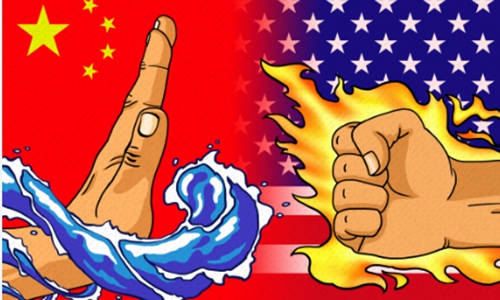
The US plans in the coming year the largest military expenditure in its history. It will spend over $700 billion in 2021, much of it on the expansion of its military capabilities in the South China Sea. The Trump administration plans to sell three new advanced weapons systems to Taiwan as part of its strategy of isolating China, involving new regional alliances with India, Japan and Australia. The world finds itself at its most dangerous moment as the US seeks to restore its dominance over the world economy with the real possibility of armed conflict with China.
Smith ends his book by saying that the CCP has ‘held back China’s masses for seven decades’ and that the party has created the worst ever environmental crisis. He paraphrases Mao’s victory speech in 1949 saying, ‘It’s time the Chinese people stood up again. The fate of their nation and the fate of the planet depend greatly on them’.
I’m not convinced he is taking aim at the right target.

